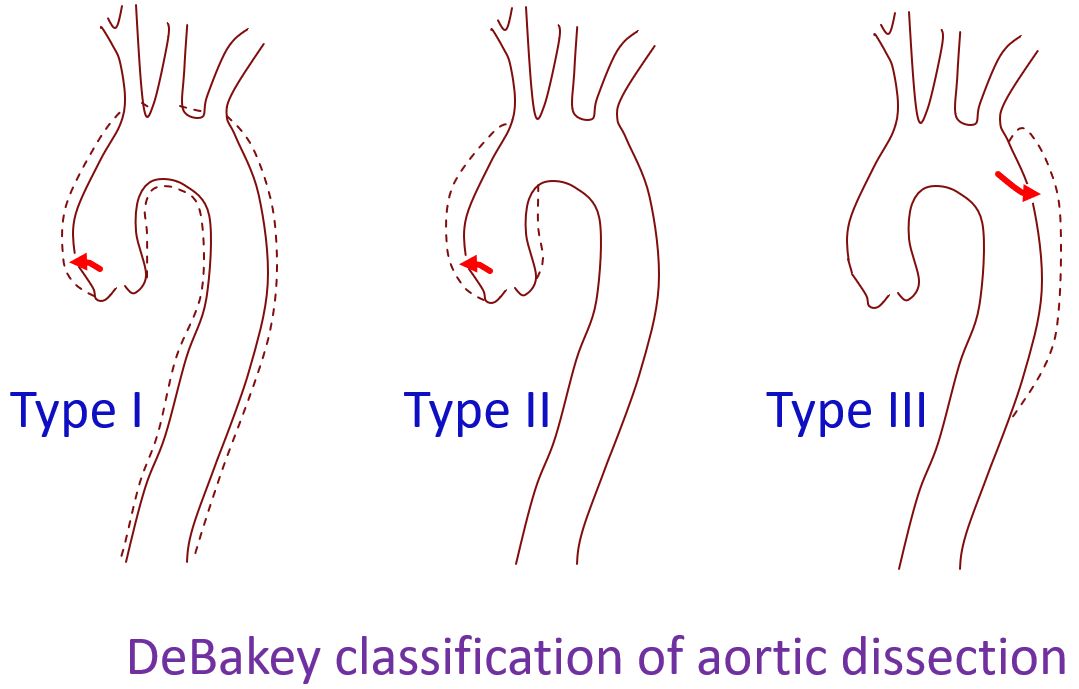Aortic dissection – mechanisms and classification
Aortic dissection – mechanisms and classification
Aortic dissection – mechanisms and classification:
Mechanisms of aortic dissection
- Intimal tear
- Medial hemorrhage due to rupture of vasa vasorum, extending into the lumen
Location of intimal tear in aortic dissection
- Near the aortic valve
- Region of ligamentum arteriosum
Stanford classification of aortic dissection
Depending only on the location of the dissection, not on the location of the intimal tear
A: Ascending aorta is involved
B: Ascending aorta is not involved
DeBakey classification of aortic dissection
II: Ascending aorta
I: Originates in ascending aorta and extends at least till the arch
III: Descending aorta

Genetic conditions predisposing to aortic dissection
- Marfan syndrome
- Ehlers Danlos syndrome
- Turner syndrome
Post cardiac surgery aortic dissection
Commonest cause of post cardiac surgery dissection is after aortic valve replacement
Echocardiogram in aortic dissection
Aortic dissection is diagnosed by visualizing the flap in more than one view, with independent motion and different colour flows in true and false lumens.
Transthoracic echo may miss one third of aortic dissections while transesophageal can detect almost all cases. Distal ascending aorta and part of the proximal aortic arch may not be visualized well on transesophageal echo due to the intervening air passages.
Aortic dissection, penetrating aortic ulcer, intramural hematoma, pseudoaneurysm, impending rupture of a true aneurysm. All these conditions cause acute chest pain mimicking aortic dissection. First three are usually described as acute aortic syndromes.

